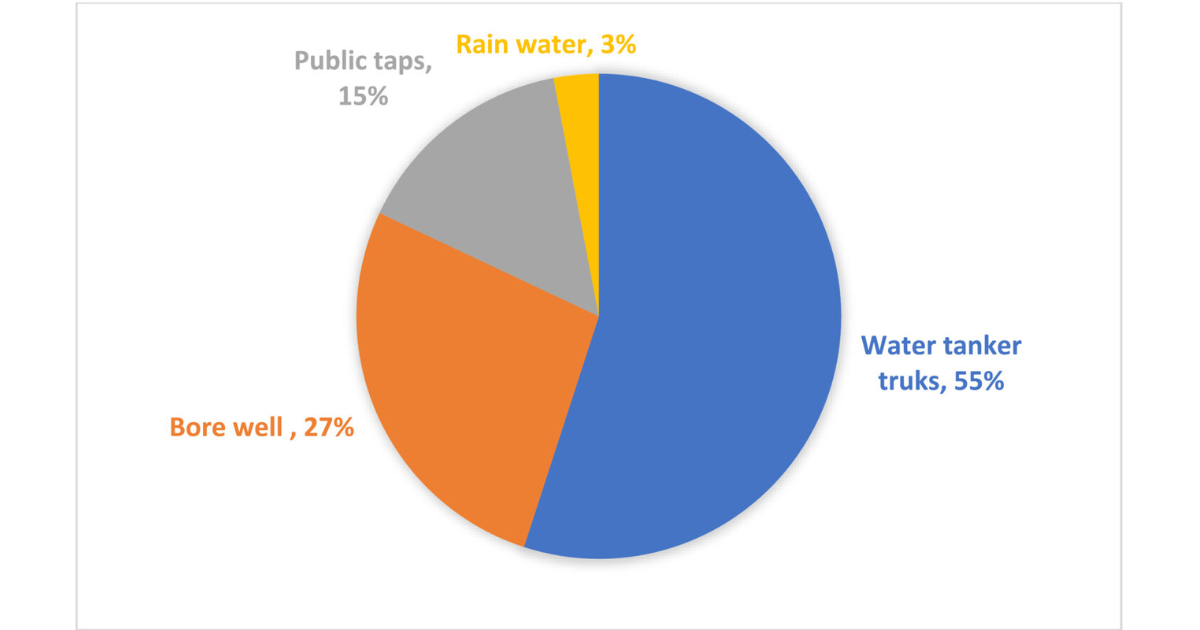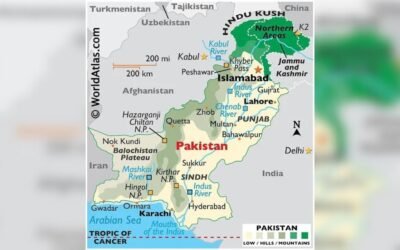Pakistan is edging toward a full-blown water crisis. Ranked among the most water-stressed countries globally, it faces a declining per capita water availability that has plummeted from 5,600 cubic meters in 1947 to less than 1,000 today, dangerously below the water scarcity threshold set by the UN. Punjab, Pakistan’s most populous and agriculturally vital province, is responding with a multi-layered water strategy that experts say could offer a template for nationwide replication. But translating Punjab’s model to other provinces is not as straightforward as copying and pasting policies

Source: X/@brief_pk
Punjab’s Water Management: A Framework in Action
Punjab’s approach stands out because of its institutional reforms, community-based water governance, and use of climate-smart technology. Central to this shift is the Punjab Water Resources Management Act 2019, which introduced a licensing regime for groundwater abstraction and regulations for wastewater disposal. This law has created legal mechanisms to monitor, allocate, and conserve groundwater, a critical step, given that groundwater accounts for 60–70% of Punjab’s irrigation needs.
Complementing this legal framework is the Punjab Drinking Water Policy 2011, which targets safe water access through better infrastructure and quality monitoring.
“Punjab is moving toward regulating how much groundwater is extracted, by whom, and for what purpose,” says Dr. Muhammad Javed, Director of the Strategic Planning and Reform Unit (SPRU) at the Punjab Irrigation Department. “We are trying to build a system where water use is accounted for and optimized.”
🚨 Water Crisis Warning!
National Party chief Dr. Abdul Malik Baloch says:
“If water scarcity continues, mass migration from Balochistan is inevitable.”
Urges urgent government action.#WaterCrisis #Balochistan #DrMalik #ClimateChange #Pakistan #MigrationRisk pic.twitter.com/XxUaYN1zLl— Quetta Voice (@VoiceQuetta) July 31, 2025
Climate-Smart Technology and Data-Driven Tools
A major boost to Punjab’s water management comes through the Water Resource Accountability in Pakistan (WRAP)program implemented by the International Water Management Institute (IWMI). The province has introduced automated CTD sensors for real-time groundwater monitoring, soil moisture sensors to assess crop water needs, and Principal Component Analysis (PCA) to optimize well placement.
One of the program’s early wins has been the Punjab Irrigation Department’s formal adoption of PCA for piezometer installation. These tools help assess both the quantity and quality of underground aquifers, supporting Irrigation Demand Management (IDM) by aligning water supply with actual crop needs.
Dr. Mohsin Hafeez, Director of Water, Food and Ecosystems at IWMI, says, “Punjab’s reliance on groundwater is growing due to erratic rainfall patterns driven by climate change. Our interventions aim to guide farmers and urban planners toward sustainable usage.”
Pakistan Faces water crisis:
Freshwater loss Risks National
Stability and social Cohesion pic.twitter.com/tdh9zS6iw7— PTV World (@WorldPTV) July 31, 2025
Community Ownership and Agriculture Reforms
Punjab also emphasizes community participation, especially in rural water supply. Local communities are involved in planning and maintaining water projects, creating a sense of ownership and accountability that leads to longer-term success. In the agriculture sector, the On-Farm Water Management (OFWM) program promotes drip and sprinkler irrigation systems, which are up to 50% more water-efficient than traditional flood irrigation.
“We need to get more crop per drop,” says Engr. Malik Muhammad Akram, Director General of OFWM Punjab. “That means improving irrigation efficiency, especially in regions like Thal and Cholistan that have yet to be fully brought under cultivation.”
Punjab’s urban centres, home to nearly 30% of its 90 million residents, face different pressures. Cities like Lahore, Rawalpindi, and Faisalabad depend heavily on groundwater, while aging infrastructure leads to leakage and contamination. Five large cities rely on WASAs (Water and Sanitation Agencies), while over 150 smaller urban settlements fall under the under-resourced Tehsil Municipal Authorities (TMAs).
Despite efforts, utility-level performance data is often inconsistent or unavailable, making it hard to gauge progress. Still, the Government of Punjab is exploring public-private partnerships and output-based financing to boost the performance of urban water supply systems.
Can Other Provinces Replicate Punjab’s Strategy?
On paper, Punjab’s model is appealing. But provinces like Sindh, Balochistan, and Khyber Pakhtunkhwa (KP) have distinct environmental and governance challenges. Sindh, for instance, faces seawater intrusion and poor irrigation efficiency in its delta region. Balochistan’s arid climate limits surface water availability, while KP relies more on mountainous spring systems than canal networks.
You May Like To Read: Why More Women Are Entering Politics—And Winning
“There’s no one-size-fits-all approach,” says Dr. Ayesha Saeed, a water policy researcher at the Pakistan Council of Research in Water Resources (PCRWR). “Punjab has set the benchmark, but each province must adapt its model based on its own hydrological and socio-economic realities.”
A major barrier to replication is institutional capacity. Many provinces lack the trained personnel and technical infrastructure needed to implement reforms. Financing is another hurdle. Building a groundwater monitoring network or overhauling irrigation systems can cost billions. Public awareness is equally vital; changing consumption habits requires sustained engagement and education.
Inter-Provincial Water Politics
Effective national water management hinges on coordination between provinces, especially in managing shared river systems. Punjab’s experience navigating disputes over water allocations through IRSA (Indus River System Authority)could serve as a precedent for better federal-provincial cooperation.
Still, mistrust persists. Sindh has repeatedly accused Punjab of unfair water diversion, while smaller provinces argue they lack the political leverage to enforce equitable distribution.
“Punjab must be transparent in how it manages and reports water use,” says Dr. Hafeez. “Only then can trust be built across provinces.”
You May Like To Read: Safer Roads Now: Pakistan’s New Traffic Tech Is Slashing Fatalities
Moving Toward a National Water Framework
Pakistan’s long-term water security depends on scaling up successful provincial models while crafting a unified national water policy that sets performance benchmarks, promotes equitable distribution, and encourages innovation.
Key recommendations include:
- Standardizing data collection for utilities nationwide
- Creating a national fund for water infrastructure improvements
- Investing in climate-resilient water technologies
- Promoting community-led water governance
- Strengthening IRSA’s conflict resolution mechanisms
Punjab has demonstrated that serious reform is possible. But if Pakistan is to avert a full-scale water emergency, the rest of the country must catch up and quickly.
“The crisis is not just coming,” warns Dr. Javed. “It’s already here. The question is whether we are willing to act before the taps run dry.”







